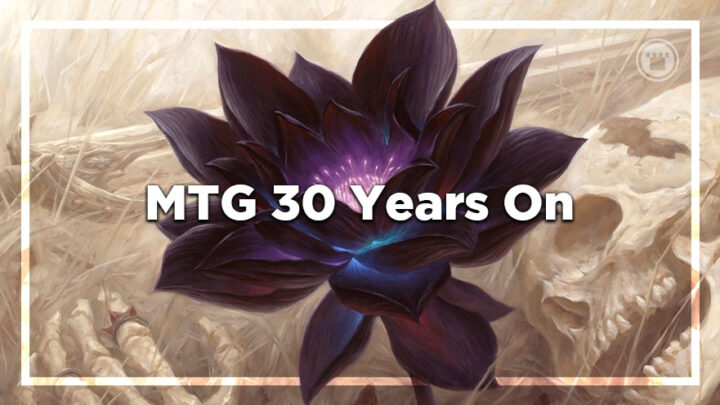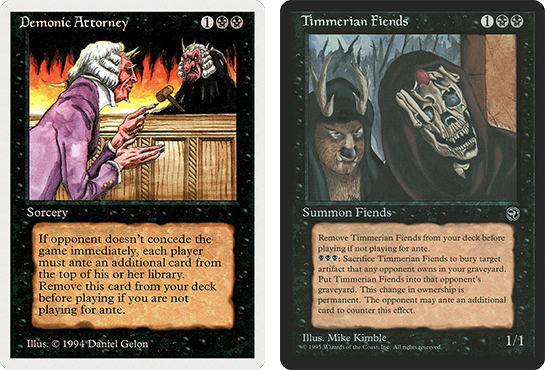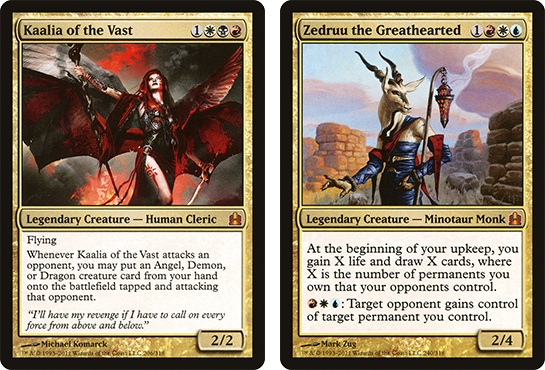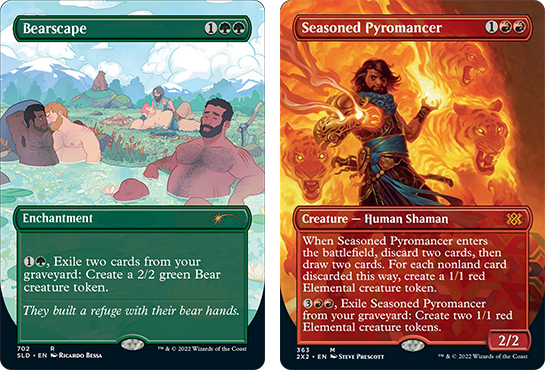Magic’s 30th anniversary is coming up, and Tom takes a look at how the game has changed over that span – and how it’s stayed the same!
Get ready for a celebration – after WotC’s big announcements last week, it looks like Magic’s 30th anniversary year is officially about to kick off! (Unofficially, it might be pointed out that the game will only be “entering its 30th year”, and that what most of us would call its “30th birthday” will come around in August 2023…)
But that would be missing what’s really worth talking about here – how amazing it is that we still play fundamentally the same game as Richard Garfield designed in the early 90’s! Not many tabletop games can stay relevant for that long, and most that do have had to completely overhaul their rules several times in that period, effectively making a clean break with their original incarnation.
You could quite reasonably argue that these are two different games, not one long-lived one.
Some traditional board games like Chess have stood the test of time – but they have not had to weather the constant, rapid evolution and expansion that Magic embraces every year! 30 years of constant growth and innovation without ever needing a complete reboot is a peerless record in game design, and one WotC should absolutely be celebrating.
THE DECK OF THESEUS
But not needing a complete reboot of the rules doesn’t mean Magic today is anything like how it was on its release! Yes, the cards are all officially compatible – so long as you’re happy looking up the latest oracle text updates for cards instead of the printed rules…
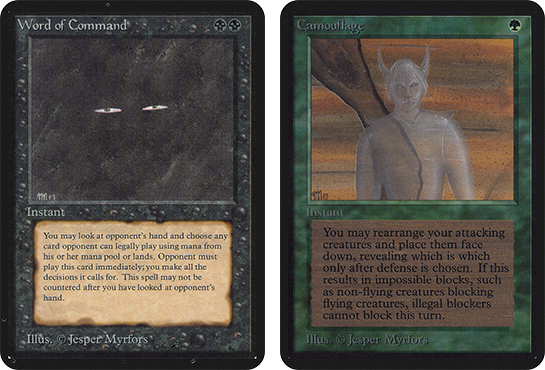
Simple art, difficult judge calls.
But even so, it’s obvious just looking at those 1993 printings that almost every aspect of the game has changed significantly at some point in the interim. Joking references to “Magic as Garfield intended it” are popular because we’re all aware that that’s only true on a very abstract level, just as Theseus’s ship is only nominally the same vessel after every part is replaced.
Such changes in the style and gameplay of Magic are always noticeable and memorable for those who lived through them – but invisible for players who come to the game afterwards. As a result, they tend to form the lines along which we can vaguely define “eras” of Magic, along with all the in-jokes and “back in my day” lecturing you’d expect around any generational divide.
EARLY YEARS: PLAYING BY DIFFERENT RULES
Magic has never gone more than a handful of years without making some meaningful revision to gameplay rules, but it was in the first decade or so where the big important stuff about the game was really figured out – though not without effort or a few pitfalls:
Tap symbol added, rewriting artifact rules (Revised, 1994)
Non-creature artifacts were originally divided up into additional types based on function: “mono artifacts” could be used once per turn cycle, “poly artifacts” could be used multiple times, and “continuous artifacts” were those with static or triggered abilities which could not be activated by choice.
Revised Edition lived up to its name by introducing a tap symbol (though just a letter “T” instead of the familiar arrow), rendering these artifact types obsolete.
Ante mechanic removed (Alliances, 1995)
Early editions of Magic let you play for keeps! “Ante” rules had each player bet a random card from their deck before the match, with those cards becoming prizes for the winner. To spice things up further, a subset of “ante cards” could grant overpowered effects – but only if you upped your bet by a card or two!
Unsurprisingly, most players hated the idea of losing their cards over a random match. WotC also belatedly realized the legal risks of including real-life gambling in their all-ages card game. The entire mechanic was banned from sanctioned play and phased out of new sets.
Invention of the stack, among other things (6th Edition, 1999)
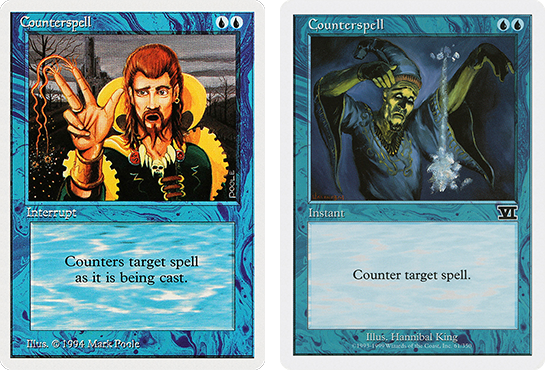
After years of piecemeal changes here and there, 6th Edition was the game’s first really massive overhaul. The rules templating was now much more consistent from card to card, making misinterpretation less likely. The hidden rule which made all artifacts lose their abilities while tapped was removed – with the effect now specified on the cards where it was deemed essential to their balance.
But by far the most impactful change was the invention of the stack, and the accompanying removal of the interrupt card type. Previous timing rules had seen effects and their responses resolving simultaneously, or in “batches”, with the interrupt card type given special permission to break these rules (to counter a spell, for instance).
Establishing the stack altered the balance of many cards from what was originally intended, but it brought consistency and complexity to timing spells which continues to fuel the highest level of Magic today. Much later, the idea of interrupt-speed cards would be revisited with the Split Second mechanic (which I think should be used a lot more often!).
MIDDLE YEARS: FINDING AN IDENTITY
So early Magic card design was very hit-or-miss, but after these early card types were errata’d, others were deprecated, and new ones (like equipment!) were added, things became a bit more recognizable. Or at least the rules text did. Pinning down anything like a readily identifiable tone or aesthetic proved harder, though the project was already well underway by the turn of the millennium.
After years of the “too many cooks” approach to art and story, 1997’s Weatherlight gifted Magic its first big narrative arc – Gerrard Capashen and his airship crewmates uncovering and battling a vast Phyrexian conspiracy. Sets from the “Weatherlight Saga” established a strong preference for painterly, detailed card art, along with a more consistent depiction of the setting’s creatures and technology. It’s a distinctly dated, early-anime/prog-album-art vision of fantasy – but it gave Magic an identity amid a glut of sword-and-sorcery media.

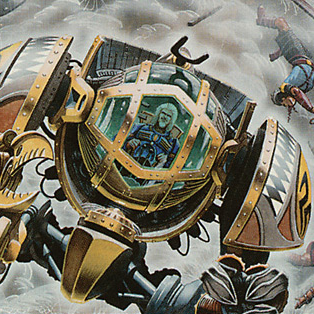


By the time it wrapped up in 2001, the Weatherlight Saga was clearly collapsing under its own weight, and WotC were looking for a new way to brand and market their sets. Having always struggled to convey their character-driven storylines through just card art and flavor text, the writers switched their focus to the settings, with each block of sets taking place on a new and visually unique plane of the multiverse!
It meant abandoning their previously-established art style, but the payoff was worth it; Mirrodin, Kamigawa, and Ravnica all made huge impressions on the playerbase – and didn’t leave new players with years of obscure backstory to catch up on. This approach also left more room for creativity and diversity in card concepts, mechanics and creature types.



Around this time creature cards in general were made more powerful and central to gameplay than they had previously been – a change which remains somewhat divisive between older and newer “generations” of the community. All this culminated in Lorwyn block: not only did it feature heavy support for fresh tribes like Kithkin and Treefolk, it also introduced the first Planeswalker cards. Permanent-based value engines and board presence have only become more universally important since.
LATER YEARS: THE MODERN ERA
Despite the rapid expansion of its conceptual and mechanical vocabulary throughout this plane-hopping, Magic had managed to avoid major rules overhauls for most of the 2000’s, largely perfecting that robust legal-ese style of templating which kept the game intelligible and consistent. Having settled into a new rhythm of storytelling though, it was time to shake things up.

More commanders should simply allow you to ignore rules changes you disliked.
Magic 2010 (which came out in 2009, starting a confusing tradition) did bring momentous change. Combat damage no longer used the stack, and mana no longer caused mana burn, along with ability keywords like Deathtouch and Lifelink being codified to replace older triggered versions of those effects. These changes significantly altered how hundreds of existing cards functioned – and there were also more narrow changes, like Warp World decks being significantly nerfed by the new rule that the player who initially controls a token is always its owner.
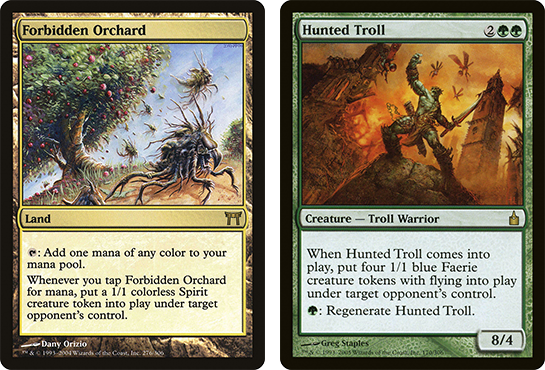
Look what they took from us.
Next, there were some very important changes to formats – a part of the rules which had also started to solidify over the 00’s. Extended had existed for a few years as a sort of proto-Modern; but unlike Modern, Extended still had to deal with rotation every few years. This was likely the biggest reason for its eventual downfall and replacement by Modern. In even bigger news, WotC adopted a judge-devised “casual fun” format as a new line of products – releasing the first Commander precon decks in 2011.
Through the rest of the decade, both Commander and Modern would grow tremendously to become the preeminent ways to play Magic. The appeal of power, identity and non-rotating decks attracted and retained players, a marketing lesson WotC would not forget in years to come.
Then in the late 2010s, we had another sudden rules turmoil over changes to the pregame mulligan – changes which sparked heated debate and triggered several banlist updates to reflect their broad impact on gameplay. Banlist updates slowly increased in frequency overall, as power creep continued and new design staff expressed a willingness to push the envelope of balance – an approach coined for the public as “FIRE”.
RECENT YEARS – FIREWORKS APLENTY
The mulligan change was representative of a broader philosophy around the game’s design at this point – can we make it smoother, more forgiving, more intuitive, but especially faster?
There was a sense that long, drawn-out games or unlucky draws can easily turn someone off the hobby – especially in the new Age of Arena, where thousands of online complaints attest to the conspiratorial tendencies of slighted Magic players.
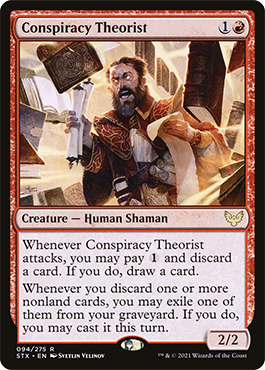
He just wants to talk to you about the Bo1 shuffler.
To further blunt the worst of the bad beats, card effects were made more widely available (black gets artifact removal now! White gets card draw!) and also more flexible in general. These experiments are still going on today, with a steady stream of draw-smoothing mechanics such as MDFCs bringing the average quality of a hand (and the average land count of a deck) higher with each passing month. This has been accompanied by another stretch of general power creep and emphasis on on-board value, perhaps to bring Constructed formats more in line with the play patterns of Commander – now officially embraced as the most common way to play Magic.
The block model of storytelling has been abandoned, but not in favor of an all-encompassing long-term plot like The Weatherlight Saga or the years-long buildup to War of the Spark. Instead, the aesthetics of Magic have become even more diverse and decentralized, introducing major pop cultural crossovers through Universes Beyond and daring artistic styles through Secret Lair drops. This embrace of diverse visuals has also led to a boom in alternate printings and showcase versions of cards, now much more directly marketed to collectors through special booster packs and Masters sets.
MAGIC CONTAINS MULTITUDES
In fact “diversity” has become the overall watchword for Magic as it prepares for this next decade of development. Offering ever more diverse play experiences with digital-only cards and special Limited formats like Commander Legends. Diversifying its settings beyond the limits of traditional fantasy, with bold forays into cyberpunk, crime noir and sci-fi. Celebrating and better representing the diversity of people who play it.
The recent WotC slogan of “not every Magic product is for you” has been a fairly huge culture shock to long-time players who had fully embraced the game and expected that dedication to always be returned in kind. But this period of busy, sometimes reckless change and experimentation is a testament to the belief that Magic can, should, and will offer more than any one player might need from it – in the hope that by doing so it will not limit itself to only serving a single type of player.

Tom’s fate was sealed in 7th grade when his friend lent him a pile of commons to play Magic. He quickly picked up Boros and Orzhov decks in Ravnica block and has remained a staunch white magician ever since. A fan of all Constructed formats, he enjoys studying the history of the tournament meta. He specializes in midrange decks, especially Death & Taxes and Martyr Proc. One day, he swears he will win an MCQ with Evershrike. Ask him how at @AWanderingBard, or watch him stream Magic at twitch.tv/TheWanderingBard.

